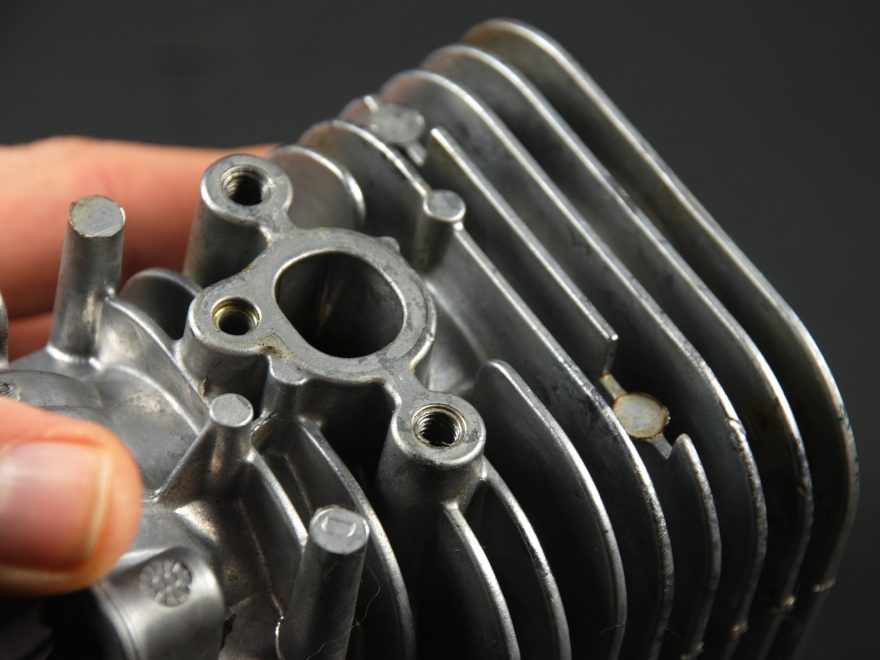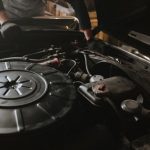Your VW is misbehaving. A lot. To the point that you’re considering replacing the VW carburetor. Sound familiar?
We’re talking black smoke from the exhaust, backfiring, overheating, and other fun signs that you’re in for a real auto repair treat.
Buckle your seatbelts. It’s going to be a ride. We can’t make promises about said ride being fun. Keep reading to find out how to replace your carburetor.
Does Your VW Carburetor Need to be Replaced?
Before you go nuts in car parts and tools, ask yourself this: does your carburetor actually need to be replaced?
Find Your Online Car Repair Manual Today! ->>
Because if it doesn’t, you’re signing up for a whole lot of unnecessary and probably frustrating work.
You should only be replacing your VW carburetor if the corrosion or damage is too extensive for a simple clean or rebuild to remedy.
Otherwise, you’re looking at spending up to $200 unnecessarily, and most people don’t have a spare $200 they’d like to toss at their car.
Setting up Your Carburetor
And, we’re back to square one. You have to replace your abominable carburetor after all. Lucky you.
As much as you’d probably like to, this is not a tear it out and throw a new one in type of situation. Actually, that would make the whole situation somehow less fun than the one you’re currently in, which is impressive, all things considered.
You need to set up your VW carburetor. Not like a date. Like a breakup preparation speech. Except with a car part.
Look on the bright side: at least there won’t be tears. That’s a lie. There might be tears. Only if you do it wrong.
Keep calm and read on.
Check and Adjust Fuel Pressure
Carburetors are designed to operate within a certain fuel pressure range.
Spoilers: if they don’t operate within that range, they won’t work. Even if the carburetor is brand new.
You need to check what brand of carburetor you have for the appropriate fuel pressure range. Once you have that information on hand, you’ll need to swing by your friendly neighborhood auto parts store for a combination vacuum-pressure gauge.
If the pressure is excessive, bringing it down depends on what type of fuel pump you have.
Pro tip: don’t be that guy or gal who assumes that your pressure will be in range just because you have a stock pump. It’s a novice mistake. If you’re replacing your own carburetor, we can only hope that you’re not a novice.
Clean It
Yes. Even if it’s new and sparkly. Do better than your teenage self did with your room and clean it.
This is for two reasons. First, cleaning your VW carburetor will require you to take it apart, which forces you to familiarize yourself with the ins and outs of the part.
You know, like what goes where, how things fit together. Important information.
Second, carburetors are not made in labs. They’re made in factories.
Spoilers: factories are not the sanitized, antiseptic environments you’d like to pretend they are.
Which means you need to clean your carburetor. Even if you just bought it.
Set Your Fuel Level
And before you pass Go and spend $200, you need to set your fuel levels.
Unless your life is a movie wherein your carburetor magically comes with the correct float levels, you need to check and fix them.
This is not a movie. And even if this was that magical perfect movie carburetor, it was handled by a lot of people to get from a factory production line to your garage, which means the float levels have definitely been thrown off in the interim.
Replacing Your VW Carburetor
And now, the (not) fun part: replacing your carburetor.
If you’ve followed the previous steps, then you should be prepared for that killer break up speech with your old carburetor.
Here’s how that speech goes.
Disconnect and Remove Parts
This is a multi-step process with a lot of working parts. Or, rather, parts that need to be disconnected from your VW carburetor.
That’s because the carburetor does a lot to help your car run properly.
For starters, you need to disconnect the battery cables. Since the carburetor is part of the fuel system, this will avoid sparks caused by accidentally touching electrical connections to things they shouldn’t touch.
And since you’re handling gasoline in liquid and gaseous forms in this process, you really don’t want any sparks flying.
You should also remove the air cleaner and any other air duct intake work, as well as removing vacuum hoses, linkages, and other parts attached to the carburetor.
And don’t forget about the fuel supply line (don’t forget to release any residual pressure and drain the fuel either).
Basically, if it’s attached the old carburetor, it has to come out.
Remove the Old Carburetor
Now that everything’s unattached, it’s time to remove the old carburetor.
To do this, you’ll have to remove the carburetor mounting hardware and separate the carburetor from the intake manifold (be gentle and don’t force it – the body is fragile).
Once it’s separated from the intake manifold, put shop rags in the intake manifold. This will keep debris out of the engine (but make sure you don’t push them in too far that they can’t be retrieved later).
Prepare to Install the New Carburetor
From here, you’re in the final stretch.
Before you go any further, take a good long at both carburetors. Make sure they have all the same features, mounting points, fuel inlet style, general position, etc. Otherwise, the new carburetor won’t work in your engine.
If it all checks out, you’re ready to proceed.
Your carburetor should be clean, as should the intake manifold flanges. You need to install a new gasket if applicable (typically, replacement carburetors come with one). Transfer any parts from the old carburetor to the new one, and remove all your rags from the intake manifold.
Once this is done, you can place the new carburetor onto the intake manifold, and do the whole process in reverse, reconnecting everything that you disconnected. Check for any leaks, build fuel pressure, reinstall the air cleaner, give it all a once over and restart the engine.
Then, stand up and do a happy dance. You replaced your carburetor.
Making Sense of Auto Repair
Listen, we get it. Auto repair can be frustrating and often confusing.
That’s why we’re here to make it easier.
Click here to check out our selection of auto repair manuals for VWs.
Or, if you need advice from a real live mechanic, click here.







